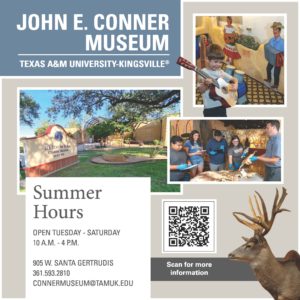Program has ‘very successful outcomes’
Wildlife photography is the art of documenting different forms of wildlife in their natural habitats.
Some may wonder how to pursue a possible career in that field, but they can look no further. At Texas A&M University-Kingsville (TAMUK), students can take classes on wildlife photography and learn about every aspect of it.
“We teach students from anywhere on the campus how to take photographs that are of high quality that they can use for their own discipline whether it be communications, biology or wildlife sciences. This gives them an additional level of skill sets to use in their long-term job so they can be better at what they do,” Professor Dr. Brian Loflin said.
This program has been around at TAMUK for five years and it has had very successful outcomes for graduate and undergraduate students.
To get a certification in Wildlife Photography it requires three classes which include Art and Design of Digital Wildlife Photography, Close-up and Macro Wildlife Photography and Communication and Publication of Wildlife Photography.
If students are interested in getting a minor in wildlife photography they need to take six classes total.
The three mentioned and an additional three, which are Advanced Wildlife Photography, Wildlife Photography I and Wildlife Photography II.
“As far as our research goes, we’re the only four-year college or university that offers a full program in photography. Rochester Institute of Technology has a program but it’s all medical photography, we’re the only one that we can find that has a program such as this,” Loflin said.
With this program, many internships and job opportunities can open up for students. It can also get them ahead of others who may have not had this opportunity.
“I have gotten a lot of job opportunities. Actually, I’ve traveled to Puerto Rico twice and I’ve gone to Costa Rica as part of doing internships, so that allowed me to actually take pictures not just of wildlife, but of students interacting with professors in the field documenting everything we do,” graduate student Alexander Meza said. “I’ve done events here on campus with the College of Agriculture [and] I’ve done jobs for the King Ranch, because of my skills as a photographer.”
This program isn’t just for students who have an interest in animals, it’s here to widen their skill sets and teach them what they need to know about wildlife photography.
“I had been doing photography for about two years prior to me joining the wildlife photography program, but mainly did family portraits, sports photography and things of that nature. While that was fun, I always look for opportunities to broaden my skills as a photographer,” undergraduate student Gabriella Ruiz said. “I am an Animal Science major, so I love the outdoors and animals and seeing the beauty behind nature. I, at the time, was also looking to bring more energy to my course schedule and step a little bit out of my comfort zone. Thus, I decided to get involved with the wildlife photography program and I am so glad I did.”

